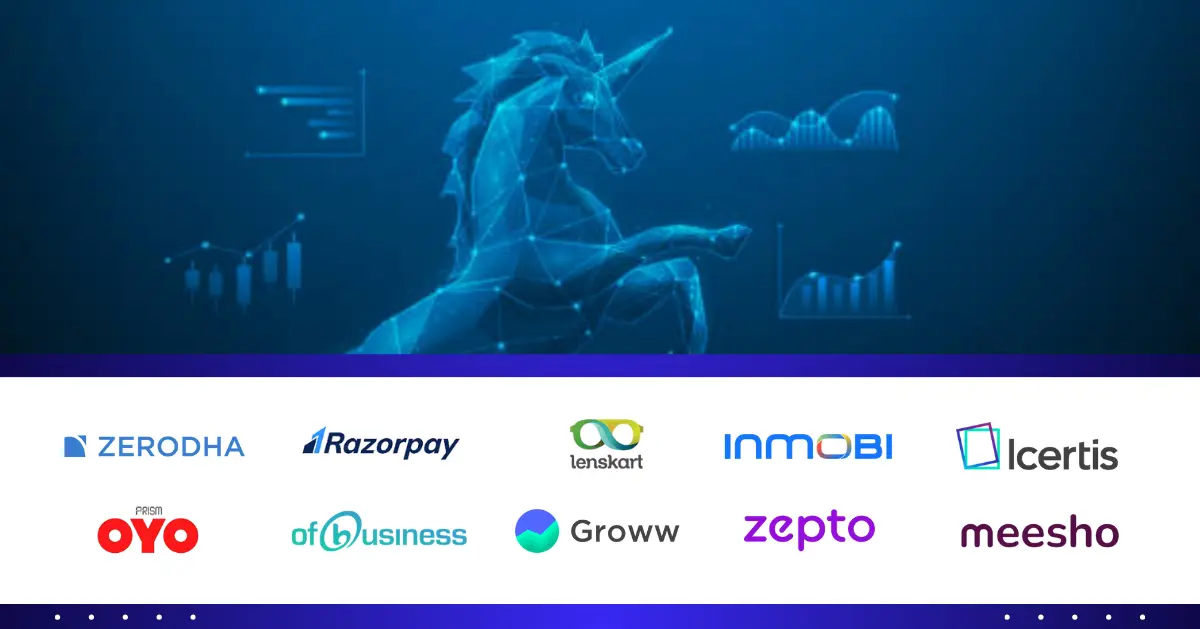
Introduction
In today’s fast-paced global trade environment, ports serve as the backbone of international commerce. Ports act as the essential point of entry and exit for goods moving across borders. For businesses in India, registering a port is a crucial first step towards smooth and legal operations in the maritime trade industry. Understanding the intricate process of port registration ensures that businesses comply with all relevant regulations, secure port authority registration, and simplify customs clearance for ports. Whether you’re looking to operate at a major port, a minor port, or a private port, the registration process must be followed diligently. This detailed guide explores the essential steps, documents, regulatory requirements, and common pitfalls in the port registration process. So, let’s dive in to understand how to navigate this procedure successfully.
What is Port Registration?
It is a legal procedure through which businesses or individuals acquire permission from the appropriate port authorities to engage in maritime operations, specifically importing and exporting goods. By obtaining port authority registration, businesses can efficiently operate within Indian ports, avoid legal complexities, and ensure smooth customs clearance for ports.
This formal process also includes registration for related services like ship registration, which authorizes vessels to dock, load, and unload goods within port limits. It serves as an essential bridge between maritime trade and national regulations, ensuring that operations comply with both local laws and international maritime standards.
Types of Ports That Require Registration
In India, port registration is essential for multiple types of ports, each serving unique functions in global and regional trade. Below are the different types of ports where port authority registration is mandatory:
1. Major Ports
- Managed by the central government, major ports play a significant role in handling high volumes of international cargo, contributing substantially to India’s maritime trade.
- Examples of Major Ports:
- Mumbai Port: One of the largest and most significant ports in India.
- Chennai Port: A key international port on the eastern coast of India.
- Kolkata Port: Handling a wide range of cargo and critical for India’s international trade.
Major ports handle large-scale operations and require businesses to follow the complete registration process to ensure compliance with government regulations and international maritime standards.
2. Minor Ports
- Minor ports are governed by the state government and focus on regional trade. These ports may specialize in handling certain types of cargo, such as agricultural products or industrial supplies.
- Examples of Minor Ports:
- Mangalore Port: Handles bulk and liquid cargo.
- Surat Port: Primarily caters to regional trade in Gujarat.
While the registration process for minor ports is similar to that of major ports, these facilities are more specialized in their operations and require businesses to comply with state-level regulations.
3. Private Ports
- Private ports are owned and operated by private companies or business conglomerates and often serve specific industries such as mining, manufacturing, or energy.
- Examples of Private Ports:
- Adani Ports: A prominent private port operator that handles cargo for various industries.
- Jawaharlal Nehru Port (JNPT): A government-private partnership port facilitating both domestic and international trade.
This process for private ports involves additional approvals from the Ministry of Shipping and may include stringent regulatory and environmental checks.
Step-by-Step Process for Port Registration in India
1. Business Registration
Before registering a port, ensure that your business is properly incorporated under Indian law, such as the Companies Act, 2013. This step is critical as it provides your business with legal status and enables you to engage in maritime trade legally.
- Types of Business Registration:
- Private Limited Company: Ideal for small to medium-sized businesses.
- Public Limited Company: Suitable for larger operations.
- Limited Liability Partnership (LLP): For businesses wishing to limit liability while retaining flexibility.
Example: If you are setting up a business in the shipping sector, ensuring that your company is incorporated as a Private Limited Company will enable you to comply with Indian corporate law, making your port authority registration process smoother.
2. Obtain Importer Exporter Code (IEC)
An IEC is essential for businesses involved in import or export operations. Issued by the Directorate General of Foreign Trade (DGFT), the IEC is a mandatory document for engaging in international trade and must be obtained before applying for port authority registration.
- Why IEC is Important: It ensures that your business is recognized by customs authorities for legitimate import/export operations.
3. Digital Signature Certificate (DSC)
A Digital Signature Certificate (DSC) is required to authenticate online applications and documents submitted to the port authority and customs authorities. This certificate ensures the validity and security of your digital transactions.
- Usage: DSC is used for secure communication, signing electronic documents, and applying for registration and other government services.
4. Register with ICEGATE
The Indian Customs Electronic Gateway (ICEGATE) is an online platform that facilitates the electronic filing of customs documents. Registering with ICEGATE is crucial for ensuring customs clearance for ports and for smooth handling of import/export activities.
- Why ICEGATE: It streamlines the customs clearance process, reducing paperwork, and enabling real-time updates on shipments and other activities.
5. Application Submission to Port Authority
Submit your port registration application to the relevant port authority. The application should contain accurate details about your business, cargo types, and the nature of operations. You must also specify the type of port (major, minor, or private) where you wish to operate.
- Online vs Offline Submission: Depending on the port authority, the application submission may be either online through their portal or offline at the port office.
6. Documentation
A variety of documents are required to complete the port registration process. These include:
- Business Incorporation Certificate: A copy of your company registration.
- IEC (Importer Exporter Code): Necessary for import/export activities.
- Digital Signature Certificate (DSC): Required for signing online documents securely.
- PAN Card: Permanent Account Number for tax purposes.
- GST Registration Certificate: For businesses engaged in goods and services trade.
- Bank Account Details: Proof of bank details for transaction purposes.
- Authorization Letter: If applying through an agent or representative.
Ensure that all documents are updated and compliant with legal requirements.
7. Fee Payment
After submission, the port registration fees need to be paid. These fees cover the processing of the registration and are generally non-refundable. The fees may vary depending on the port and the scale of your operations.
- Types of Fees:
- Application Processing Fee
- Annual License Fee
- Cargo Handling Charges
8. Verification and Approval
Once the application is submitted along with the required documents and fees, the port authority will verify all details. This step involves checking the accuracy of the business information and ensuring compliance with port operations and national regulations.
Compliance and Regulatory Requirements for Ports
Operating a port or engaging in maritime trade comes with stringent compliance and regulatory requirements:
1. Customs Clearance for Ports
- Businesses must comply with customs regulations regarding the documentation of goods entering and leaving the port. This includes the timely submission of customs declarations and paying the applicable duties.
2. Port Licensing
- Obtaining a port license is required for operating in most ports. This includes the adherence to safety protocols, environmental regulations, and operational standards.
3. Environmental Regulations
- Compliance with environmental regulations ensures that port activities do not harm marine ecosystems. Regulations include waste management, emission controls, and measures to prevent oil spills and other pollution.
4. Safety and Security Standards
- Port operations must meet safety standards to protect workers, cargo, and vessels. This includes fire safety, health regulations, and security checks to prevent unauthorized access to port facilities.
Port Fees and Charges Associated with Registration
The port registration process entails several costs. Some of the common fees include:
| Fee Type | Description |
| Application Processing Fee | A non-refundable fee for submitting your application to the port authority. |
| Annual License Fee | A recurring charge for maintaining the port registration. |
| Cargo Handling Charges | Fees related to the loading and unloading of goods at the port. |
| Berthing Charges | Fees for docking vessels at the port. |
| Storage Charges | Charges for warehousing goods within the port facilities. |
How to Check Port Registration Status?
1. Online Port Portals
Many ports offer online platforms where businesses can log in and check their port registration status. This allows you to track your application’s progress in real time.
2. Direct Communication
If the port does not provide an online platform, you can contact the port authority directly via phone or email to inquire about your registration status.
Common Mistakes to Avoid in Port Registration
When going through the process, avoid the following mistakes:
- Incomplete Documentation
- Ensure all required documents are submitted and accurate to avoid delays.
- Failure to Pay Fees on Time
- Not paying the correct fees or failing to pay them on time can result in delays in registration.
- Ignoring Compliance Requirements
- Failing to follow regulatory requirements can result in legal consequences. Always stay updated on rules and regulations.
- Incorrect Details
- Double-check all application details before submission to ensure that no information is left out or incorrect.
Conclusion
Successfully registering a port is a vital step in establishing your business’s maritime operations. By adhering to the port registration process, ensuring proper port authority registration, and complying with customs clearance for ports, your business can operate smoothly and legally. Understanding the complexities of port licensing and maritime regulations ensures your business remains compliant with industry standards.
At RegisterKaro, we make the port registration process easier. Our expert team guides you through every step, from maritime business registration to port authority registration, ensuring compliance with all regulations. Contact us today for expert support in your port registration process and all your maritime business needs.
Contact Us Today:
Email: support@registerkaro.in
Phone: +918447746183
Frequently Asked Questions (FAQs)
1. How long does the port registration process take?
A: Typically, it takes 2 to 6 weeks to complete the process after submitting all required documents.
2. Can I register a private port in India?
A: Yes, private entities can register ports but must obtain the necessary approvals from the Ministry of Shipping and comply with environmental regulations.
3. What are the key documents required for port registration?
A: Required documents include the business incorporation certificate, Importer Exporter Code (IEC), Digital Signature Certificate (DSC), PAN Card, GST registration, and more.
4. Is registration mandatory for all businesses involved in shipping?
A: Yes, businesses involved in maritime trade must complete port authority registration to legally operate at Indian ports.
5. How can I check my port registration status?
A: You can track your registration through the port authority’s official website or directly contact their office.
6. What fees are associated with port registration?
A: Fees include application processing, annual license fees, cargo handling charges, and others, which vary based on port and trade volume.
7. Do I need a separate license for each port?
A: Yes, depending on the nature of your business, you may need separate licenses for different ports.
8. What is the role of ICEGATE in port registration?
A: ICEGATE is the Indian Customs Electronic Gateway, where businesses can manage customs clearance documentation.
9. Can I submit my port registration application online?
A: Yes, many port authorities allow online submission of registration applications.
10. How do I maintain compliance after registration?
A: Regularly check for updates on regulations, complete periodic audits, and ensure all necessary port licensing is up to date.




